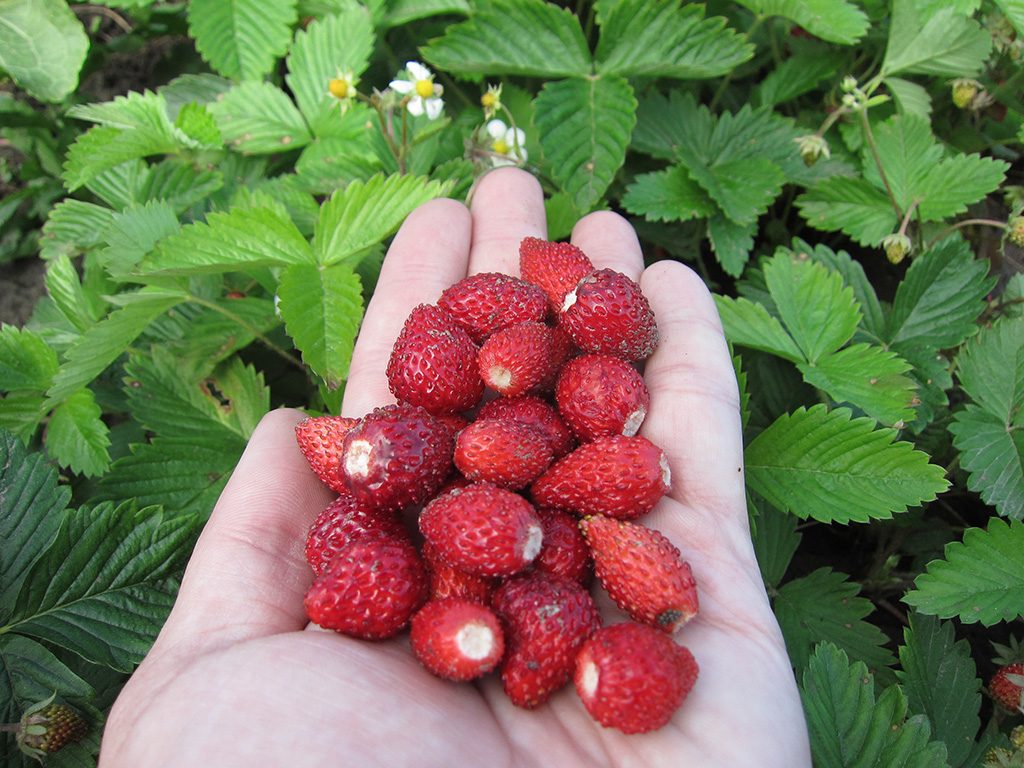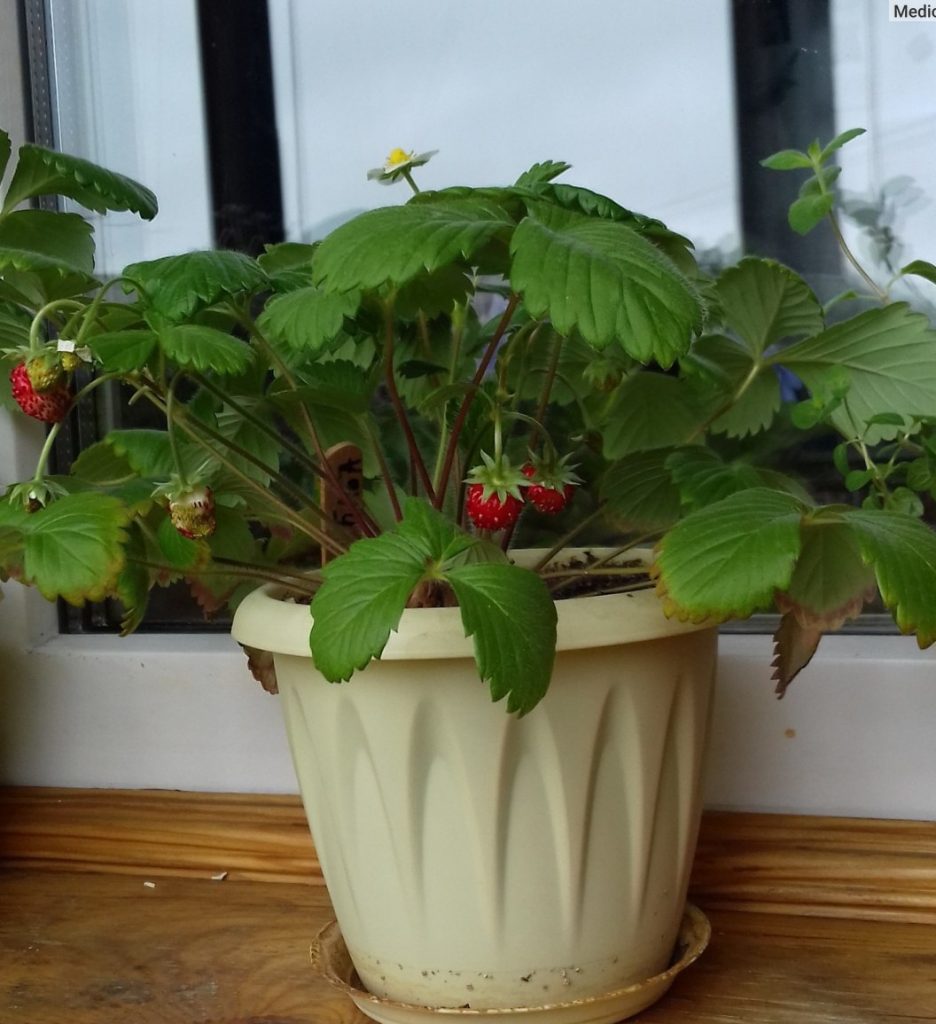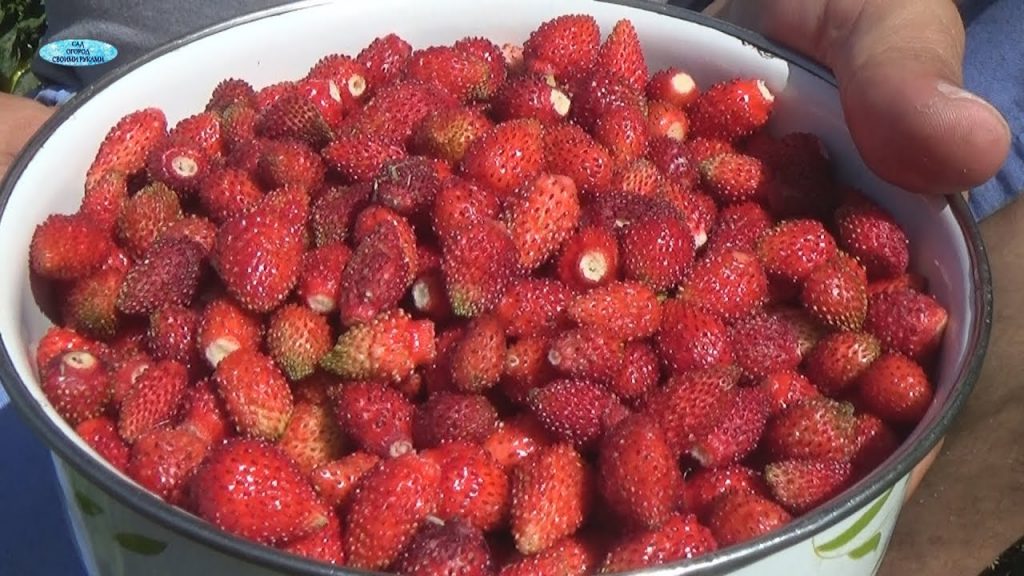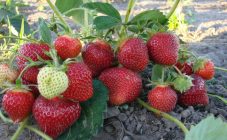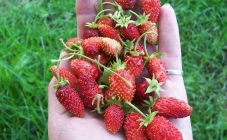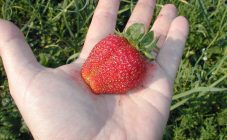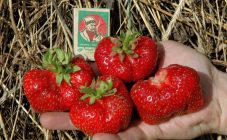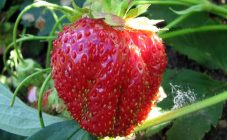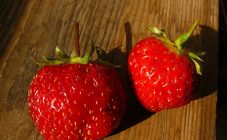Content:
Appetizing red berry with exquisite taste and excellent aroma is a favorite delicacy of many gardeners. It's about strawberries. One of the best varieties of fragrant berries is Ali Baba. The bush can produce up to five hundred berries per season. Despite the fact that the first berries begin to ripen in early summer, the plant continues to bear fruit until the first frost.
Originally, this variety was obtained in the Netherlands in 1995. It was bred by the Dutch breeder Hem Zaden, and the assistant specialist was Yvon de Cupidou. They aimed to grow a high-yielding variety. Strawberries are suitable for growing outdoors and in greenhouses.
Ali Baba's strawberries: description of the variety, characteristics and features
The bush grows up to 15-20 centimeters in height. The berries are cone-shaped and have a deep red color. The weight of one fruit does not exceed 5 grams. The berries have a pronounced aroma, sweet and sour taste, white pulp. The number of inflorescences significantly exceeds other varieties, which is favorable for the yield.
- Productivity. Ripening of berries begins in late May - early June, ends in the first half of September. If the beds are covered, fruiting lasts longer. Every 2 days, up to 1 liter of berries can be harvested from 30 bushes.
- Frost resistance. The repairing variety has good winter hardiness. A short dry period is also tolerated quite easily.
- Disease resistance. Despite their high resistance to a variety of diseases, if improperly maintained, strawberries can be exposed to gray rot, late blight and white spot. You can fight them, but this brings additional inconvenience.
Among the features are the following:
- continuous maturation throughout the season;
- due to the absence of a mustache, all the forces of the bush are directed to flowering and ripening of fruits;
- the plant does not suffer from prolonged lack of moisture and short-term cold weather.
You can grow a plant in pots, so the berry will bear fruit all year round. The only negative is that you need additional lighting in the winter season. Before planting, it is recommended to fill the drainage into the pots and lay out the nutrient soil. In order for the plant to be better pollinated, it must be shaken from time to time.
Agrotechnics
Berry propagation is possible in two ways: by seeds and by dividing the bush.
To collect grains, you must choose juicy and large fruits. The peel with seeds is cut with a sharp knife, dried and rubbed in the hands until only a few grains remain. If done correctly, they can be stored for up to 4 years. Sowing is done from February to March. The seeds are mixed with sand and evenly spread over the ground. It is necessary to water it by spraying. Cover the seedlings with glass. During this period, it is necessary to remove the glass every day and temper the plant. After the appearance of 2 leaves, it is recommended to dive the seedlings and plant them in pots.
If reproduction is carried out by dividing the old bush, it is necessary to divide it into several parts. This is done with a sharpened knife.Each part of the bush should have at least 3 leaves and two roots.
It is necessary to divide and thin out the plant in any case, since the culture tends to grow very strongly.
Landing
The area for garden strawberries should be well lit, with a slight slope. Despite the fact that the berry is demanding on moisture, its excessive accumulation should not be allowed. It is better to plant a bush or grain after crops such as garlic, carrots, beets, onions. It is better not to transfer the berry to the place of cruciferous and nightshade plants. The culture should be transplanted at least once every 3-4 years.
Strawberry grows well in non-acidic fertile soil, therefore, it must be fertilized and calcified before planting. For fertilization it is recommended to use:
- 1 tablespoon ammonium nitrate
- 2 tablespoons superphosphate
- 1 tablespoon potassium sulfate
Everything is mixed in a bucket. After fertilizing the soil, it must be carefully dug up and moistened. Plant seedlings at a distance of 25-30 cm, trying to damage the roots and gently ramming the soil around them.
Care
Stages:
- mulching. It is recommended to make a layer 10 cm thick. For this, use sawdust, grass or hay;
- watering in the grooves between the rows, preventing water from getting on the leaves and flowers. The best time of day for watering is morning;
- fertilizers. Plant feeding begins only 12 months after planting. Organic fertilizers, phosphorus, nitrogen, mineral complexes with potassium content are introduced;
- loosening the soil.
Pest and disease control
Despite its resistance to diseases, some pests cannot escape the plant. Fitosporin or Bordeaux mixture will help to overcome fungal diseases. Old and wilted leaves must be removed.
The plant will be protected from the spider mite by weed control, timely harvesting of leaves before the cold weather, and disinfection of planting material. It is recommended to plant calendula between the rows.
In case of untimely prevention or lack of effect, the following recipes can be used:
- dandelion infusion: 400 grams per 1 liter of water. The solution is infused for 3 hours;
- onion husk infusion: 200 grams of husk per 10 liters of water. The solution is insisted for 5 days.
- if the case is neglected, the plants are treated with Karbofos or Bitoxibacillin.
Crop leaves can infect:
- spider mite (leaves change color, small white spots appear on them, a light cobweb appears on plants);
- berry leaf beetles (egg clutches are observed on the lower parts of the leaves);
- slugs (there are holes in the leaves and berries);
- raspberry-strawberry weevils (egg-laying is found in the buds).
Harvesting and proper storage
The berries are picked as they ripen, about once every 2-3 days. The first harvest is taken in June. The procedure is performed in the early morning, the plucked berries can be stored for no longer than 2 days. To avoid damage to the fruit, they are plucked together with the sepal.
Preparing for winter frosts
After collecting all the berries, you will need to sanitize the plants. Sick bushes are destroyed, and leaves damaged by diseases are removed. In winter, the variety needs shelter. It is recommended to use spruce branches, on top of which a large snowdrift is poured after snow falls. If there is little snow in the region, you can stretch a wire frame over the bushes and cover it with a thick film.
Advantages and disadvantages of the variety
Variety advantages:
- resistance to pests and diseases;
- continuous phased fruiting;
- adaptability to climatic conditions: high level of heat resistance, winter hardiness, drought resistance;
- the plant bears fruit in the first year, albeit poorly;
- can be used as an ornamental plant;
- can be grown both outdoors and at home;
- the absence of a mustache, due to which the plants have excellent bushiness and do not intertwine with each other;
- the content of vitamins and nutrients in berries is equal to that of wild strawberries;
- the ability to grow in any climatic conditions;
- good productivity;
- versatility of berries. They can be eaten fresh, made jams, compotes and other seaming.
Culture also has some disadvantages:
- plant rejuvenation must be performed every 2-3 years, otherwise the yield will significantly decrease;
- propagation of strawberries is carried out by dividing bushes or grains;
- after picking the berries, it is recommended to process them immediately, they are stored for a short time;
- instability of fruits during transportation.
The berries are very beautiful and aromatic. Thanks to their small size, they are easy and convenient to freeze. The plant is easy to care for, watering is performed every 10-14 days. The unpretentiousness in breeding and the ability to bear fruit continuously made the berry a favorite of agricultural technicians. When planting a plant on a windowsill, you can feast on berries all year round, and not wait for the arrival of warm days. Like any other berries, this variety produces excellent jams, delicious preserves and aromatic compotes that will delight a family in the winter season.
